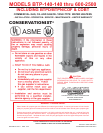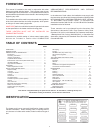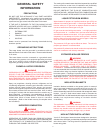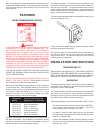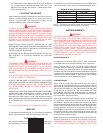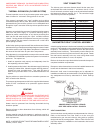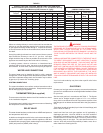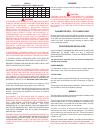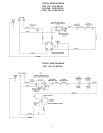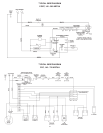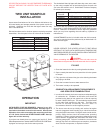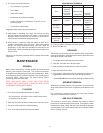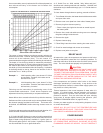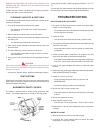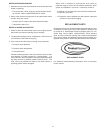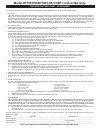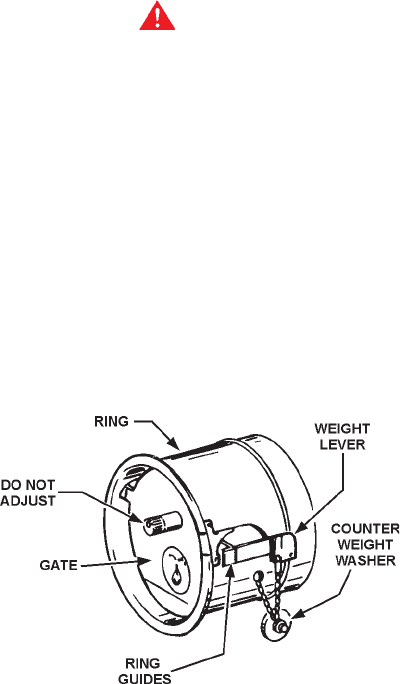
14
BURNER AIR OPENINGS OR VENTILATION GRILLES FOR
COMBUSTION AIR. REMOVE LINT ACCUMULATION FROM
AIR INTAKE GRILL.
At least annually, contact a qualified service agency for burner
cleaning and other routine maintenance.
CLEANING FLUES-COF & COBT ONLY
The following describes how to gain access to the tank flues for
cleaning if necessary.
1. Turn off the heater electrical disconnect switch.
• The switch on the outside of the control compartment
may be used.
2. Remove the vent connector from on top the heater.
3. Remove the jacket top from the heater by taking out the screws
and lifting it off.
• The insulating pad should then be lifted out.
4. Take out the screws holding the flue gas collector top to the
tank and lift off.
5. The flue baffles may now be removed by lifting out.
• The flue baffles are flexible enough to bend for removal
within headroom.
6. Using a wire brush, remove soot from flue passages in heater
tank.
CAUTION
While cleaning tank flue passages, care must be taken that brush
does not come in contact with the combustion chamber lining as
damage could occur.
• If burner flue collector flange gaskets are damaged, replace.
VENT SYSTEMS
Examine the vent system every six months for obstruction and/or
deterioration of vent piping. Remove any soot or obstructions and
replace damaged vent piping.
BAROMETRIC DRAFT CONTROL
The heater is equipped with a double acting barometric draft
control. The damper gate must pivot freely in the ring guides.
FIGURE 3
To test gate for operation, gently tap gate and observe. DO NOT
OIL.
The red solid fuel tabs supplied with the draft regulator must be
removed (See instructions supplied with Draft Regulator).
TROUBLESHOOTING
NOT ENOUGH OR NO HOT WATER
1. Be certain the electrical disconnect switch serving the water
heater is in the ON position.
• The outside of the control compartment and the power burner
housing also have switches.
2. Check the fuses
• The electrical disconnect switch usually contains fuses.
3. The capacity of the heater may have been exceeded by a large
demand for hot water.
• Large demands require a recovery period to restore water
temperature.
4. Colder incoming water temperature will lengthen the time
required to heat water to the desired temperature.
• If the heater was installed when incoming water temperature
was warm, colder water creates the effect of less hot water.
5. Look for hot water wastage and leaking or open hot water
faucets.
6. Sediment or lime scale may be affecting water heater operation.
Refer to MAINTENANCE for details.
7. Heater or burner may be dirty.
• Clean all heater flue pipes and flue connector, see
MAINTENANCE.
• Have burner properly cleaned and readjusted.
8. Burner may not be firing at proper rate.
• Check gas pressure, see burner manufacturer’s instruction
manual.
9. Burner fan wheel may be dirty.
10.Draft regulator may be stuck.
• Check to see if vane swings freely. Clean, if vane is stuck.
11.Reset button or burner flame safeguard primary control has
operated.
WATER IS TOO HOT
1. Water temperature control may be set too high.
2. If lowering the control setting does not reduce the water
temperature, contact your dealer.



